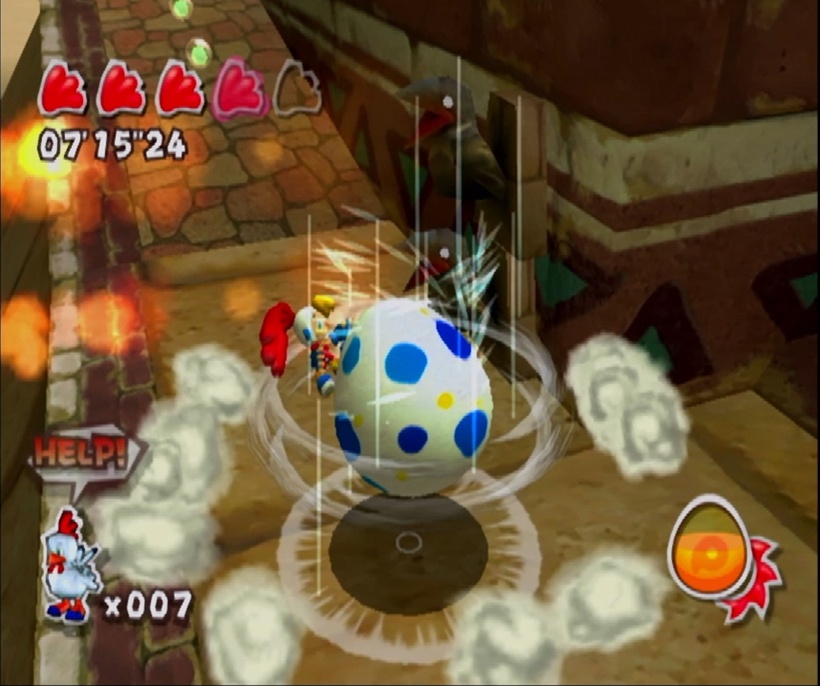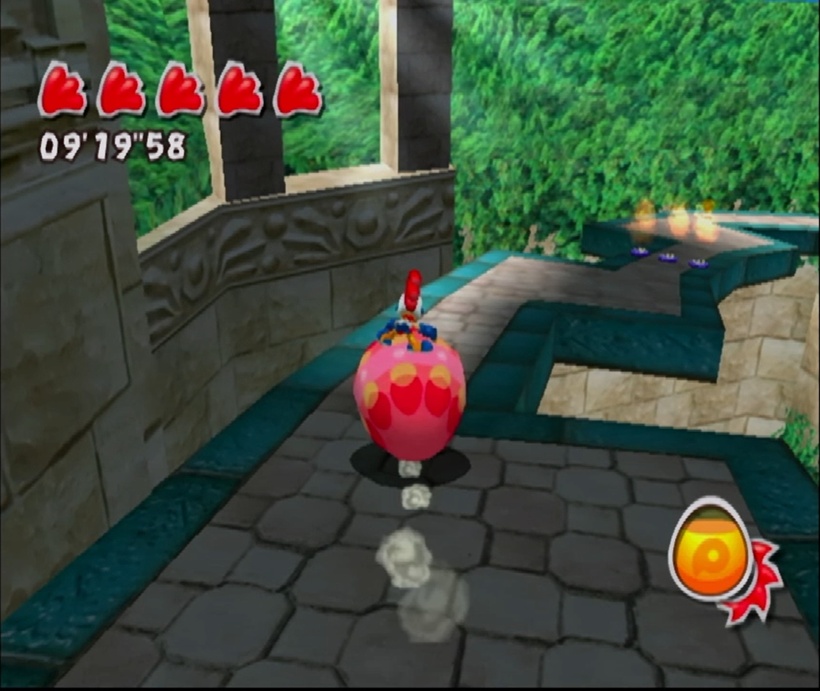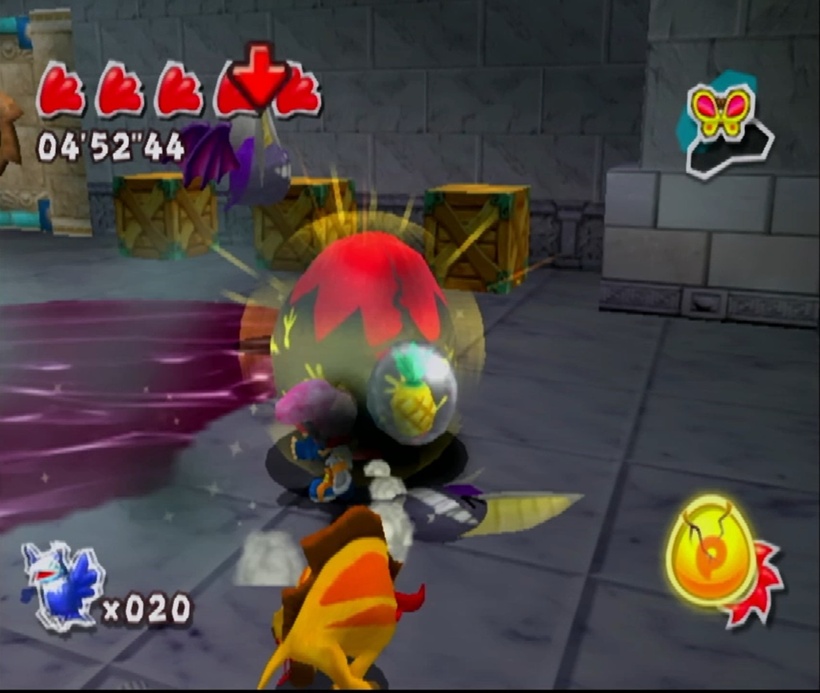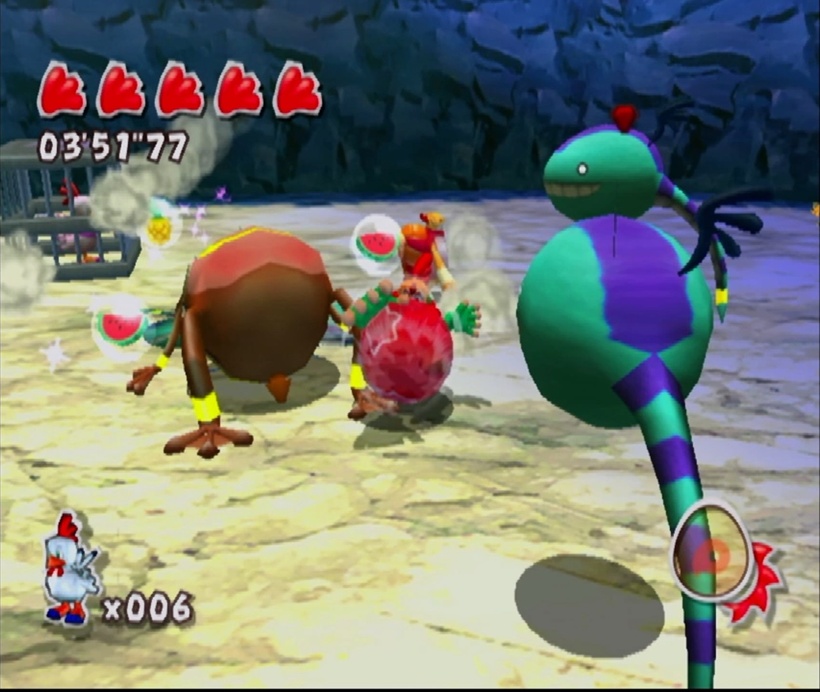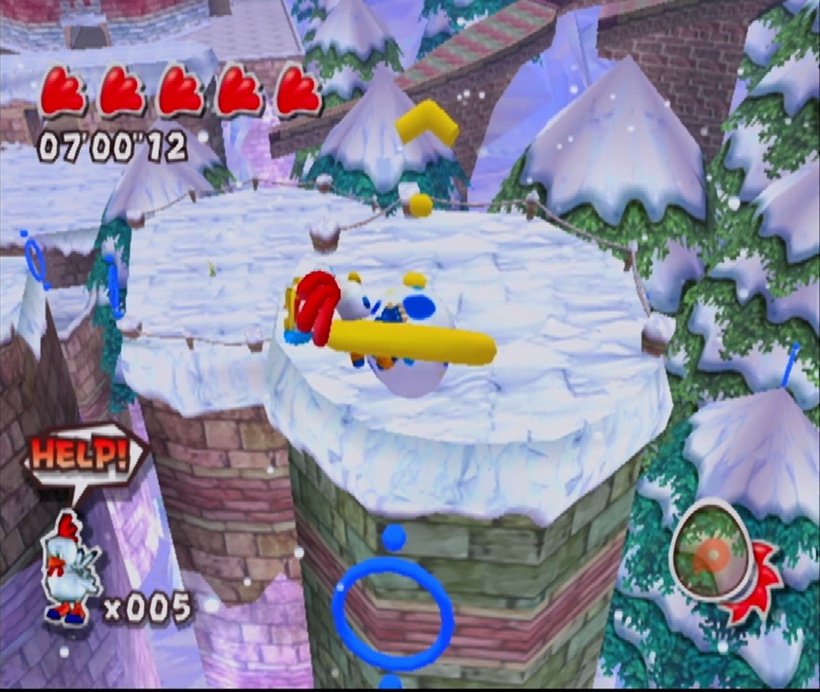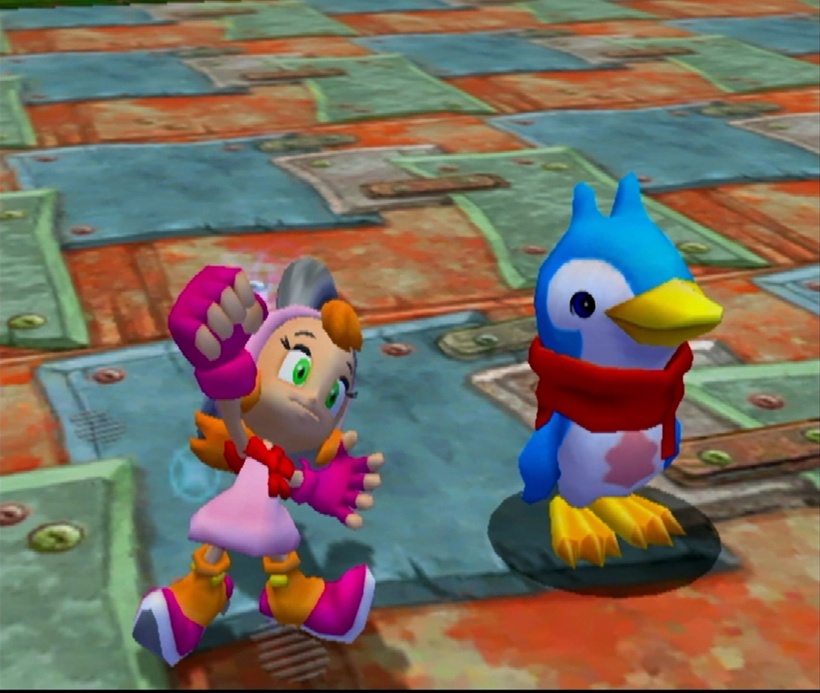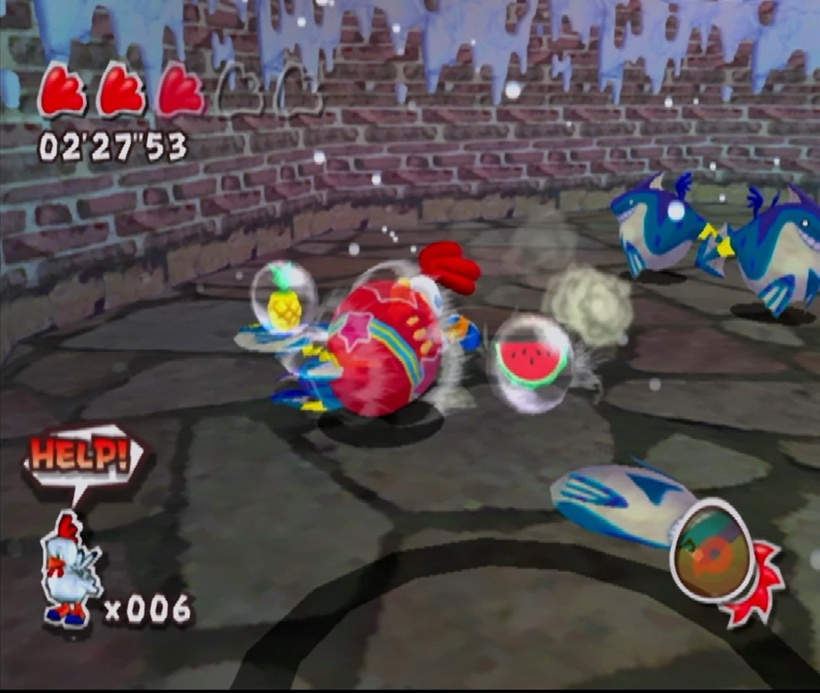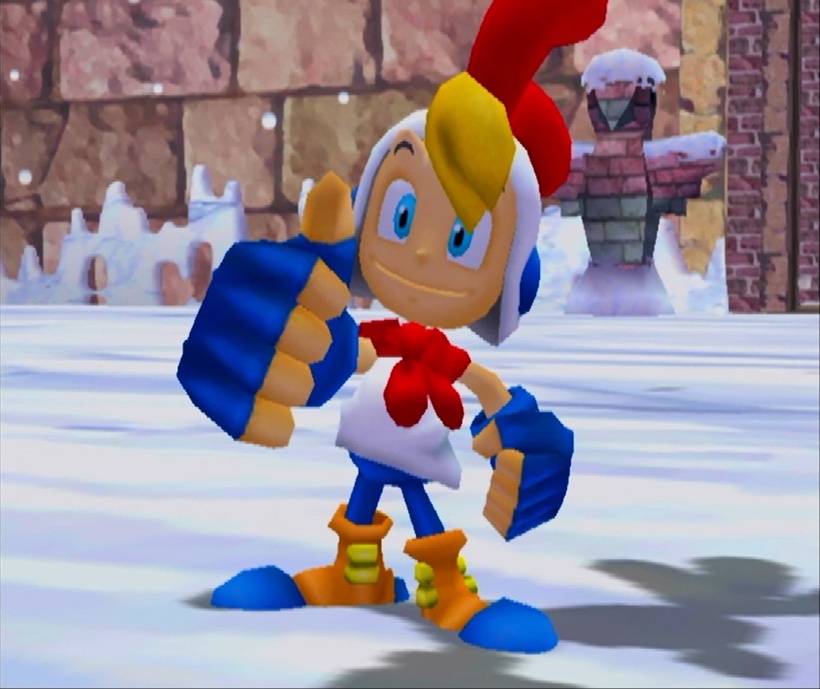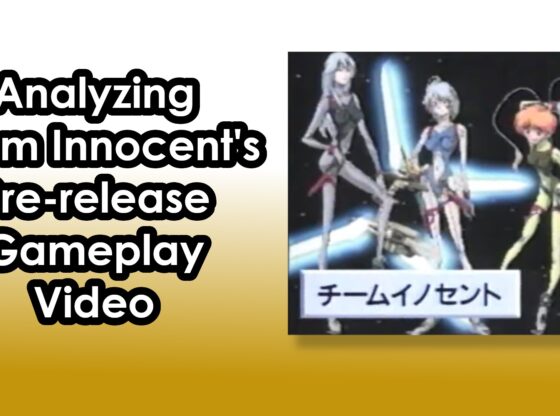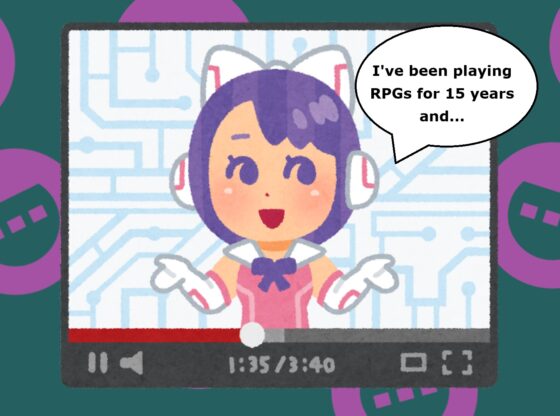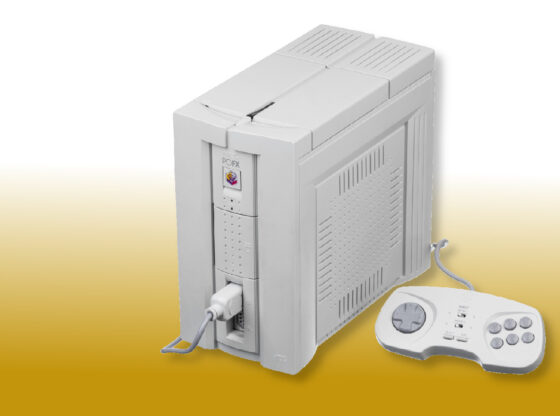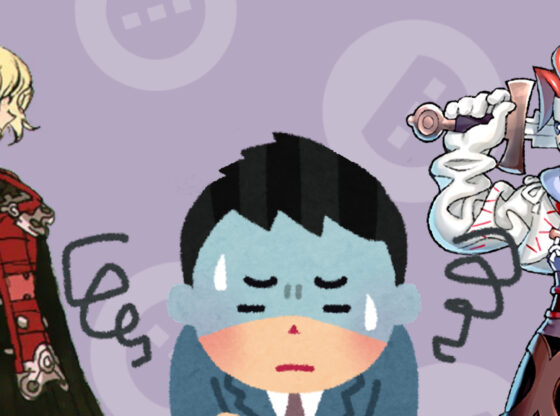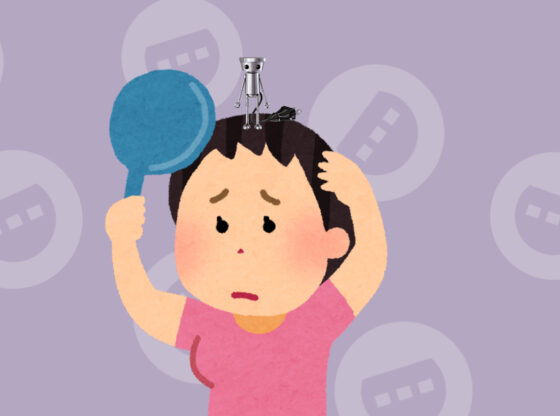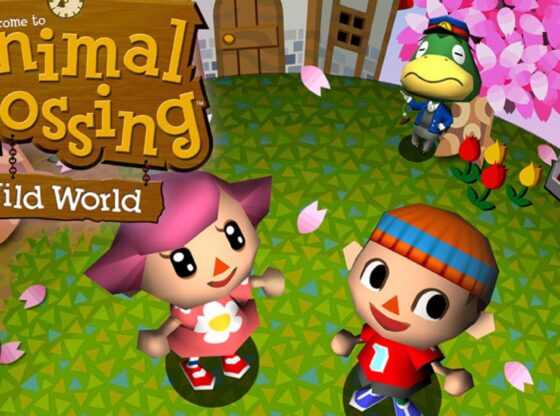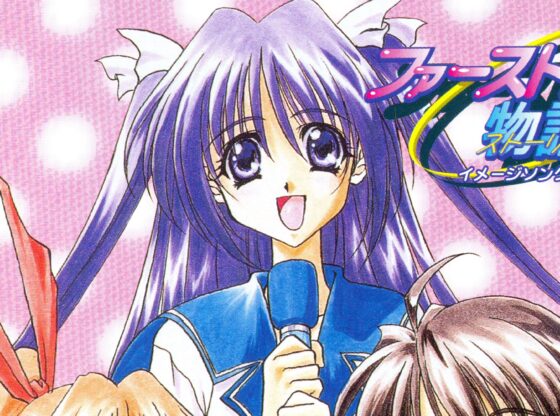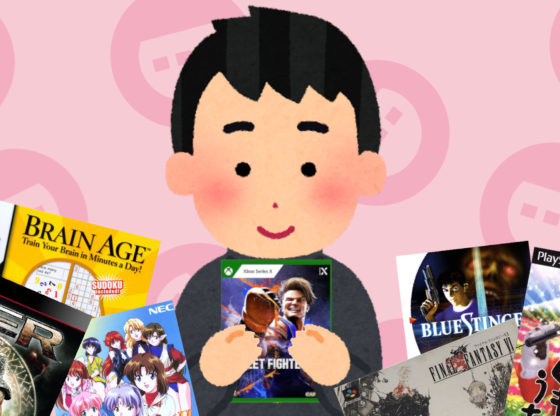Before transitioning over to doing a Balan Wonderworld video, my original intention was to do a video on Yuji Naka’s Billy Hatcher. However, eventually it got put on the back burner so long that I don’t think it’s going to resurface anytime soon.
I’d consider this script *mostly* complete. If you’d think this video would be worth my time, feel free to let me know. I’m not opposed to revisiting it in the future.
Last Edited on 3/22/2021 7:24PM
Sonic Team is a developer that’s had a lot of ups and downs. Even their mainline Sonic games can be pretty divisive. However, what most of their titles have in common is their tone. They often have a positive and uplifting vibe that make them feel good experiences. I’m someone who likes those kind of games, so I usually can get something out of them even with their rough edges. I’m also a Gamecube fan. So I knew that, eventually, I was going to check out Billy Hatcher and the Giant Egg. Unfortunately, despite trying to, I didn’t end up loving it.
It’s a shame because Billy Hatcher is not your run of the mill 3D platformer. You control a boy named Billy, who doesn’t have many capabilities on his own. He can jump. That’s about it. But grab onto a Billy-sized egg and it greatly enhances his moveset. It allows him to dash, roll over enemies, ground pound, spike the egg at foes, launch himself from egg launchers and so on. The levels are almost exclusively built for him to be connected with an Egg, despite them being two separate entities.
Which creates some interesting challenges. Billy is restricted by the egg’s movement, making things like, turning around on a narrow path, a difficult task as the egg has to swing out to rotate around him. It can also break which, depending on the mission, is either a simple annoyance or the loss of a life. There’s also some less intentional complications from this mechanic – like eggs getting stuck on platforms while Billy falls. Or weird glitchy collision issues due to them being able to exist on different surfaces.
The Egg’s capabilities can be enhanced by rolling over fruit, increasing its size and damage output. However it’s not something you always want to do, since the larger it is, the harder it can be to navigate small platforms. It can also increase the likelihood foes will hit it, or the chances that weird buggy stuff will happen. These trade off mechanics, intentional or not, create a neat sense of choice in the size of the egg the player wants to utilize.
In general, there’s quite a bit of flexibility here, as there’s almost always multiple solutions to an encounter or a platforming challenge. Utilizing these various movement options and mechanics feed into the 3D Sonic the Hedgehog-style ranking system at the end of each level. I don’t personally care about rankings, but I appreciate it rewarding the player for further exploring Billy’s more complicated movesets.
Unfortunately, for a casual playthrough, all these options and mechanics over-complicate things. Which leads to some confusion. For example – There’s a lot of states Billy can exist in:
- With egg
- Without Egg
- Rolling the Egg
- Stuck on egg while rolling
- Stuck on egg while rolling in the air
- Spinning in the air with egg.
- And probably more.
However the rules of how Billy behaves in all of these states are often different and unclear. For example: when stuck rolling on a egg, sometimes you can jump. Sometimes you can’t. Do you keep your velocity when Jumping? Sometimes? Rolling over an enemy can kill it, or hurt you.
These things are not random. After playing enough, you’ll find there’s a logic to when and how Billy acts. But the game doesn’t do a good job of communicating these quirks. So until you figure out why Billy behaves the way he does, it’s confusing, frustrating and leaves a general feeling of not being in control.
Though it is worth mentioning my first playthrough was streaming this game, so it’s very likely I didn’t catch on as fast as someone playing on their own due to the distractions that come with that.
But man – sometimes you just wanna let go of an egg and you don’t know how.
This uncertainty doesn’t just come from the controls though. Despite the game offering flexibility in how the player solves certain scenarios, sometimes the developers do have a clear way in mind for you to progress. But they don’t do a good job of pushing you away from other potential solutions they don’t account for.
Here’s a segment of the game where you have to get the egg around a wall. Normally a simple task given there’s a rail. However the existence of a door in this wall and a rail around the side made me come to the conclusion I needed to use both, sending the egg around, while walking Billy through to catch it. I spent 40 minutes trying to do this. Which would work sometimes, but other times Billy or the egg would just fall to their death in a very glitchy way.
What you need to do is actually ride the egg on this rail. I assume the door was a fail safe in case you needed to backtrack without an egg. But there was nothing pushing me away from my solution outside of just the game feeling like it was bugging out. Which put my frustration on the game itself instead rather than re-thinking how to approach it.
All this funkiness aside though, the levels rarely ask you to interact with most of Billy’s movement options anyways. Simple jumps will clear most platforming challenges and rolling over enemies is typically good enough for getting by encounters. But when hitting that moment where the game expects the player to utilize a specific move, they rarely lead you into that conclusion or temper you ahead of time to know that a particular skill solves this problem.
These elements often make it feel like what Billy can do was determined without much thought to how he’d interact with the world. That is only enhanced by a lot of the extra junk that comes from another mechanic – hatching eggs. Depending on the egg’s color and pattern, inside will be various power ups, pets that can be used to attack foes and even ride-able mounts. But there’s rarely an obvious reason to use most of these. Which makes them feel like after thoughts that could have been removed almost entirely.
One exception are some of the pets. Their ranged attacks are handy tools for not putting your egg at risk. There’s also some basic puzzles for these guys, but the game is so centralized around using eggs that utilizing them feels out of place. You can’t even command the pet while holding an egg – which is over 99% of the time.
The effort put into these features would probably have been better spent elsewhere, like the mission design. Similar to Super Mario 64 and Sunshine, each area has a variety of objectives that Billy can pursue. Most of them are common between levels with only one or two unique missions per world. However, the first two objectives are always the same and are also the most straight forward missions. They usually amounts to going from one room to the next, clearing out foes until you reach the boss. If you’re just trying to get the credits and just do these two missions for each level, this means it’s a fairly repetitive game. But if you go out of your way to do the additional objectives, these do add variety and open up many of the levels for a greater sense of exploration.
I wish there was more incentive to do these optional missions up front, because it takes more than what seems necessary to beat the game. So it creates this imbalance of linear levels early on and more open areas towards the end. So I’d recommend just doing at least some of the optional objectives from the start for a more well-rounded experience.
If you decide to collect every emblem, I can say I found that the control scheme did start to grow on me by the end and the latter objectives also ask a lot more out of the player when it comes to utilizing Billy’s moveset. But these levels are too little too late to feel like a core part of the experience.
I really want to like Billy Hatcher and the Giant Egg, and I still love the aesthetic and presentation. It’s bright, colorful and has a charming vibe to the whole experience. I also love the soundtrack, including SEGA’s signature cheesy vocals. But I’ve been listening to these for almost 20 years now, so I’m not sure if any underwhelming experience can pry me away from them.
But unfortunately it just never fully came together for me. I can envision somebody finding a lot of joy in the flexibility and options this game has to offer, especially if you’re into grinding stages to maximize your rankings. But for a casual player, all these extra bits and pieces just muddy up a charming game.


